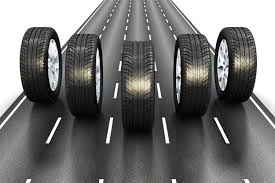From personal experiences, it has been clear that winter tyres provide more grip, more safety, and stability than conventional tread in lower temperatures. Moreover, there is a question which is stated as “When is it the best time to fit winter tyres?” for which there are specific advice offered.
Slippery trip to Finland
A few years ago, a showroom standard Ford Mondeo which was fitted with winter tyres was driven north through Finland, where the temperature dropped below minus 20 degrees at night. In this region, the road is so slippery that one has to hold onto the bonnet for staying upright.
Winter tyres, when compared to a summer tyre, have just a half of the stopping distance on an icy road. They provide extra support while going up or down a hill, cornering, and accelerating.
As UK winters are cold and damp, there is no need for winter tyres. Now the modern tyres are engineered for various conditions, due to which swapping is considered to be unnecessary.

Working of Winter tyres
When the temperature of the thermometer falls below 7 degrees, the standard rubber begins to lose the elasticity needed to grip the road properly. These tyres have a mix of different ingredients which help them to retain that flexing as they have more silica in their compound.
They have a tread pattern with a different design, which has deeper grooves that `bite’ into the ice or snow. They are combined with sipes and grooves which are wider, and they provide better drainage capability for making a way through slush or puddles.
When should one switch to winter tyres?
One must use the rule of thumb to change to winter rubber when there is a drop in average temperature below seven degrees. The rule of thumb refers to winter tyres being specific to the season and being damaged when is driven on surfaces in warmer weathers.
As the compound wears faster, one will have less gripping and stability during cornering and braking. Hence when the temperature is taken as seven degrees as a guide and is then swapped when the average changes above or below.
Myths of winter tyre
There are some myths about winter tyres, and they are as follows
By fitting only two winter tyres, one can save money, on the axle which feeds power to the road.
It is risky and is illegal to use summer tyres, and by reducing the air pressure in them, they can be used for winter conditions.
Tyres work best in climates for which they are designed for, which means maintaining a pressure that is strictly recommended. When one lets air out, it decreases the grip making the vehicle less stable and leading to premature wearing or damage.
Winter tyres are made and also known as cold weather tyres rather than being called snow and ice tyres. But one does have to remember to use it appropriately and must be guided by an average temperature for some days.
Late 2012 was when Constancy tyres had touched down first in Ireland. These tyres try to take an extra mile with peace of mind.
Some of their varieties are as follows:
Constancy LY688 Tyre
Constancy LY566 Tyre
Constancy Commercial – Van Tyres
Constancy LY788 Tyre
Constancy LY166 Tyre
Phillips Tyres is one amongst the few centres for best tyres Newbury which is specialised in mechanical, supply, and fitting of tyres for vans, cars, and 4x4s to all leading manufacturers like Pirelli, Sumitomo, and others. Its team provides advice on the best tyres for meeting the requirements of driving.